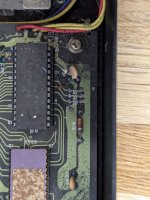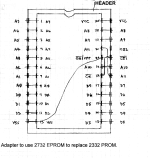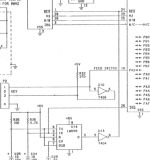giobbi
Veteran Member
Hi all,
I own this printer that was tested last time in 2021 and labelled as "working ok" by me.
Now I was trying to make some prints but I'm having some issues.
I switched it on and I pressed the FEED button a few times while I was trying to understand how to load the paper: it seemed to work fine, moving the printer head and the tractor as expected.
When I finally loaded the paper, I tried to switch it off and then keeping the FEED button pressed while power on (it should be the self test). Nope, just the red LED and nothing more, no activities, nothing. Since then, when I press the FEED button, only the red LED lights on and nothing happens.
I haven't the printer manual and I didn't find an English version (just German version, that to me is like ancient Greek). So I don't know what the red LED means and what's happening.
I also tried an open4,4 : print#4,"hello" from my 8032 connected to the printer, but I got a "device not present" error.
Any idea?
I own this printer that was tested last time in 2021 and labelled as "working ok" by me.
Now I was trying to make some prints but I'm having some issues.
I switched it on and I pressed the FEED button a few times while I was trying to understand how to load the paper: it seemed to work fine, moving the printer head and the tractor as expected.
When I finally loaded the paper, I tried to switch it off and then keeping the FEED button pressed while power on (it should be the self test). Nope, just the red LED and nothing more, no activities, nothing. Since then, when I press the FEED button, only the red LED lights on and nothing happens.
I haven't the printer manual and I didn't find an English version (just German version, that to me is like ancient Greek). So I don't know what the red LED means and what's happening.
I also tried an open4,4 : print#4,"hello" from my 8032 connected to the printer, but I got a "device not present" error.
Any idea?




